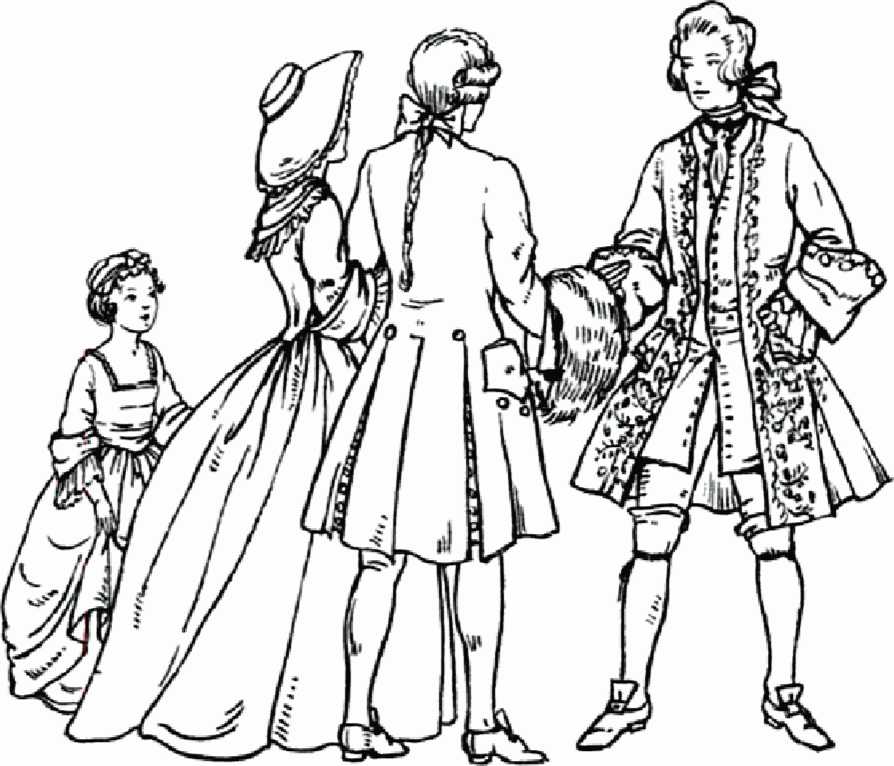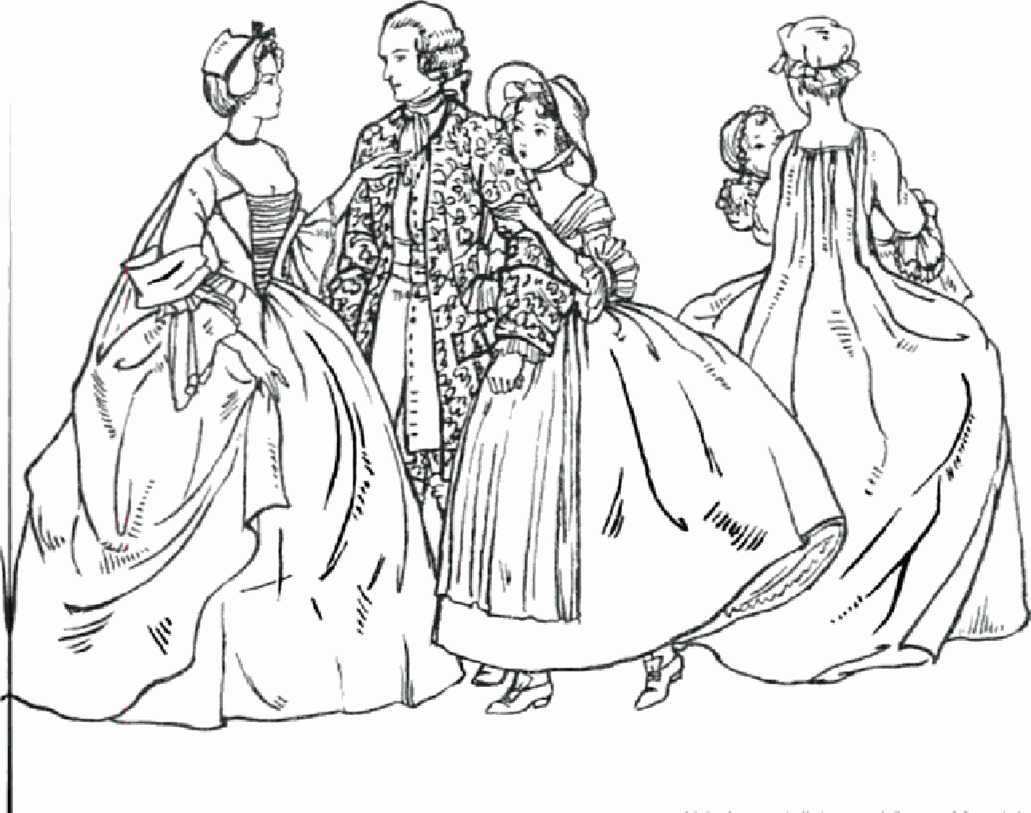TT should not be forgotten, in considering the costumes ¦*“ of a period as remote from us as the eighteenth century, that the tyranny of fashion was nothing like so complete as it is at present* Perhaps it would be truer to say that although fashion was tyrannical it was much less swift in its operation and, in the absence of fashion plates, a change in dress took much longer to filter down through the different strata of society* People in the country might well be twenty years behind the fashion, and the older men and women, even in towns, sometimes did not trouble to adjust themselves to changing taste.
In 1740, fot example, it was quite possible to see an oldish man walking, even in the fashionable St. Jameses Park, in a large full-bottomed wig, while his son beside him wore one much smaller and neater. Older men clung also to their old-fashioned cravats, just as older men to-day wear the collars which were usual in their youth. There is perhaps no article of a man’s attire about which he seems so conservative as his neckwear.
Women’s dress shows certain modifications which must be briefly noted. The sacqm gown, hanging loose from the shoulders and gathered in great folds over the hooped petticoat, appeared in 1740. It was another example of the general tendency to exalt the nigligf into general wear. The effect could be charming, hut involved considerable skill in dressmaking. Examination of the actual dresses of the period reveals the delicate cutting which was necessary in order to give the loose appearance at the back and yet mould the dress to the figure, for the falling folds were not added afterwards like a cape, but w'ere an essential part of the back of the bodice.






 World History
World History









